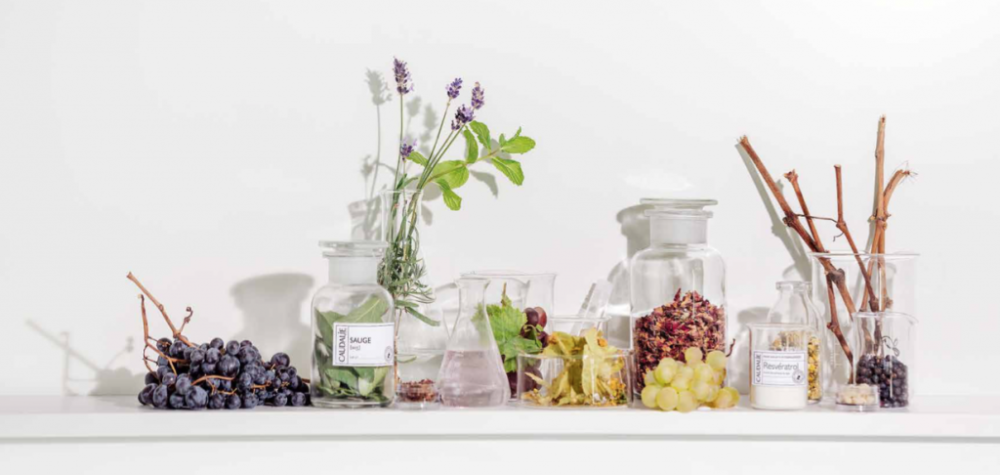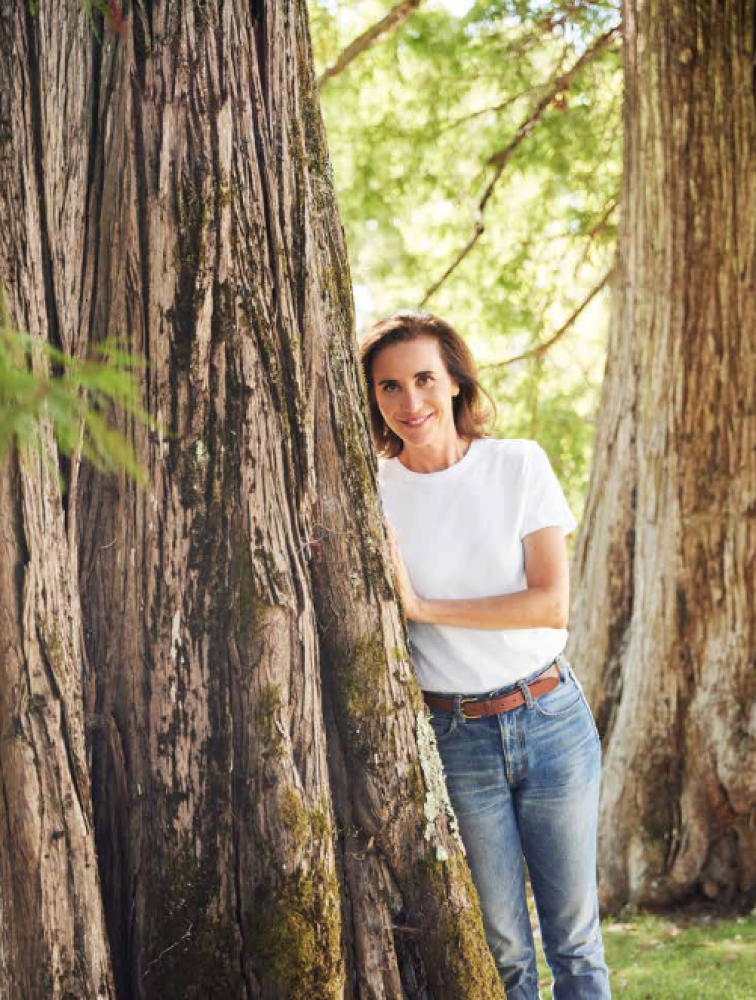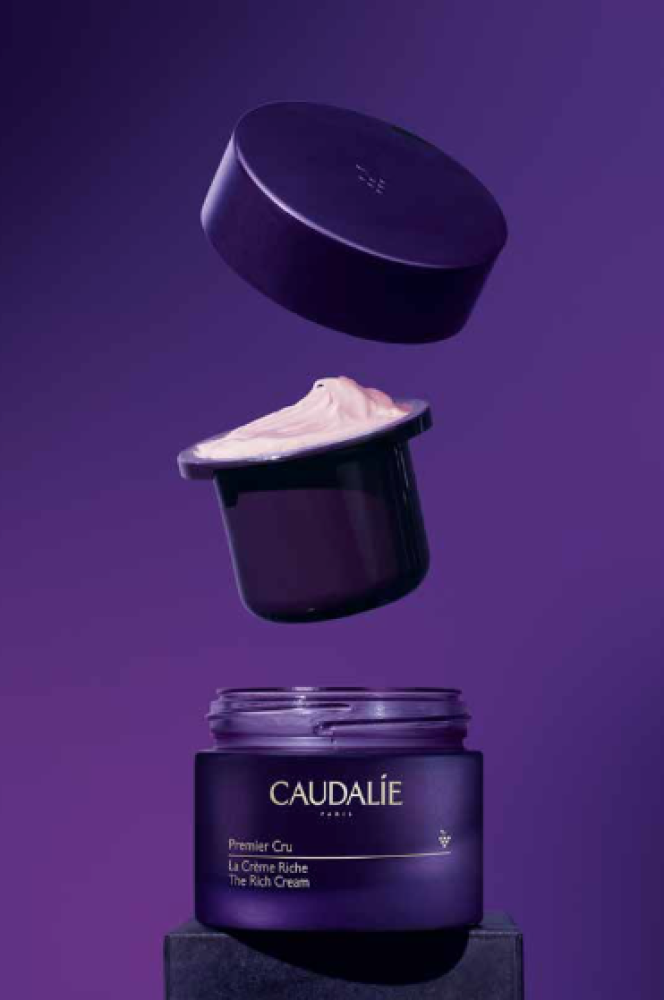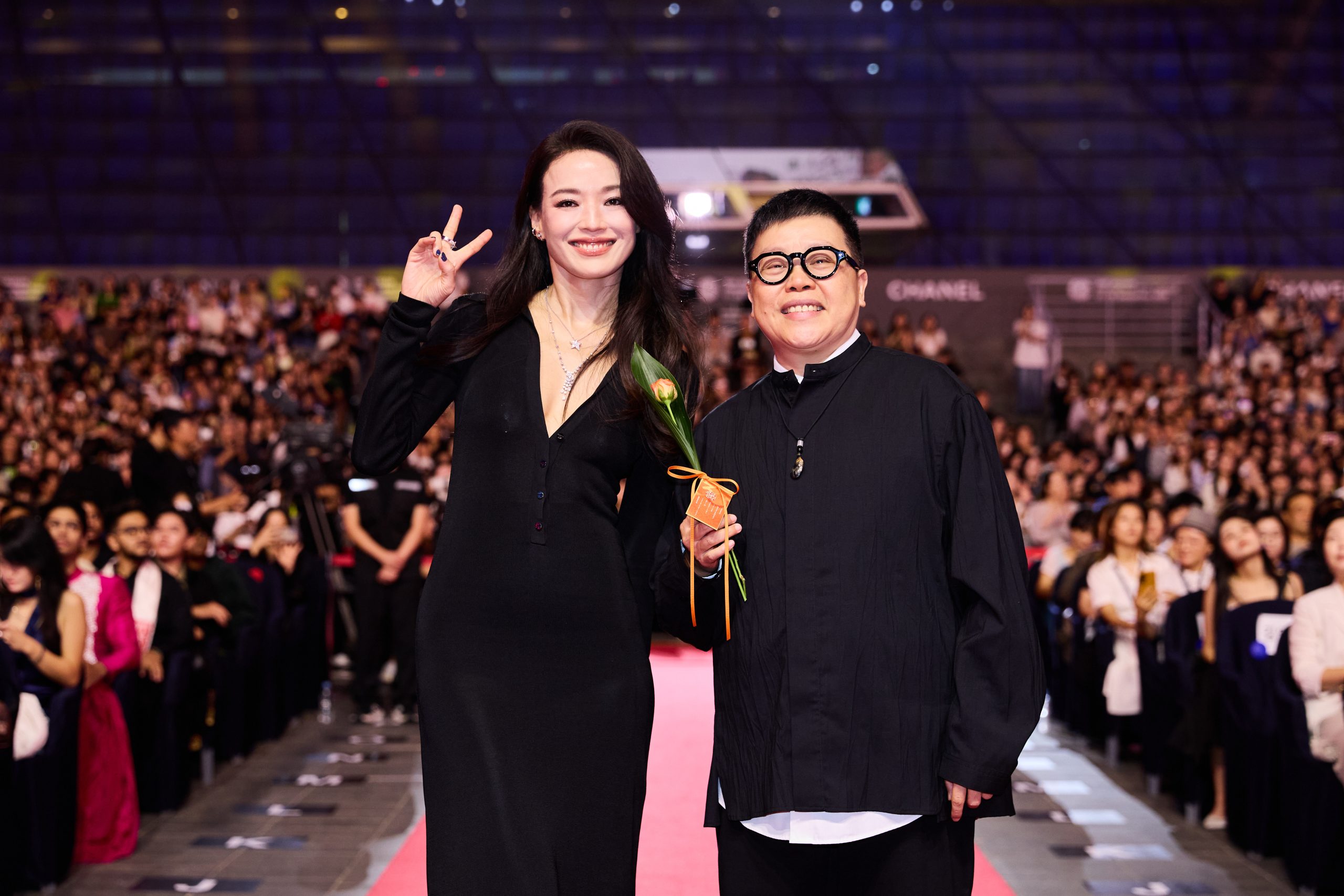Celebrating 10 years in Hong Kong, Caudalie co-founder Mathilde Thomas speaks to Stephenie Gee about being clean before clean was cool and what comes next

When mathilde thomas was studying to be a perfume nose in 1993, her parents beckoned her and her soon-to-be-husband Bertrand to take a group of professors around the family vineyard of Château Smith Haut Lafitte in Bordeaux. Among them was Dr. Joseph Vercauteren, a world-class specialist in polyphenols and professor of pharmacognosy at the University of Montpellier who, stopping in front of a vat of grape seeds, told them they were throwing away treasures. They learned that grape seeds were one of the most powerful antioxidants created by nature – 10 times more powerful than vitamin E.
Teaming up with Vercauteren, the young couple launched Caudalie (derived from the Latin word cauda meaning “tail”, it is used as a unit of measurement to describe the length of a wine’s finish) two years later in 1995, churning out concentrated, youth-enhancing essentials harnessing the antioxidant properties of grape seed–derived resveratrol and polyphenols founded on clean beauty values. Since the beginning, they believed in a greener planet and wiser cosmetics. “For me, clean and natural is mandatory. And it should also be for everybody in the beauty industry,” Thomas tells me when we meet at Caudalie’s Gough Street flagship.

Clean beauty is a spectrum. Some brands use “clean” in reference to their all-natural ingredient lists whereas others use it to describe a cruelty-free stance. Others may consider it an ethical and sustainability issue (Is the supply chain transparent? Are workers paid a living wage? How are ingredients sourced? Is the packaging no- waste?), while many tag it onto products that are vaguely marketed as “toxin-free”. For Caudalie, which named its commitment to this “cosm-ethics”, it simply means “trying to be as sustainable as can be”.
It starts with the formulas and the brand’s ingredient standards are rigorous. In 2006, Thomas removed six controversial substances from her INCI (International Nomenclature Cosmetic Ingredient) list: parabens, phenoxyethanol, phthalates, mineral oils, sodium laureth sulfate and any other animal-derived ingredients. “Back then I did a press conference in New York City and the journalists didn’t care. It was too early,” Thomas recalls. “But now, it’s a big thing everywhere in the world. Today, our formulas are composed of a minimum of 95% natural origin ingredients and the list of six [banned] ingredients has grown to more than 70 that you will not find in our formulas, either because they’re potential hormonal disruptors or because they’re irritating for the skin or because they’re from animal origin, or petrochemical.”
Also see: Beauty above the shoulders
The formula isn’t the only thing that defines a product as “clean” when factors like ingredient sourcing, production methods and packaging all play into a mission to improve wasteful or unethical practises. Enlisting a team of green packaging engineers, Caudalie revamped its entire line of packaging to be either recycled, recyclable or refillable. Furthering their efforts to tackle the world’s plastic footprint, the couple launched 100% Plastic Collect, an initiative to collect, recycle and reuse the plastic waste in the quantity used to produce their collections, starting with Thailand, which ranks sixth in the world for marine pollution.
“Giving back to our community is also a big part of ’cosm-ethics’,” Thomas says. “More than 10 years ago, we decided that we would donate one percent of our sales to 1% for the Planet to plant trees. Now, we’ve planted around 11 million in 11 different countries over the past 11 years.”

As a pioneer of clean and sustainable beauty, what’s next?
We’ve been sustainable since 1995 when we upcycled grapeseed. Sustainability has been growing and that’s a good thing for Mother Earth. It’s now easier, for example, to find active ingredients that mimic silicone and are completely natural. It’s also easier to find recyclable glass and recycled plastic. What we have to do now is stay ahead of the game in terms of effectiveness. We’ve been working for 10 years with Harvard Medical School and we have a patent with them. That makes a big difference; it’s what makes our product unique.
It’s a common misconception – that natural products aren’t as effective.
You can be clean and super effective. And that’s what I want to prove to the world. We make sure that none of our powerful ingredients are stabilised with nasties. That’s it. It’s just more work. It’s more expensive. It’s more complicated. But we have to do it and everybody will follow.
This year marks Caudalie’s 10th year in Hong Kong. How do you envision the next 10 years in Hong Kong?
I lived in Hong Kong for three years with my husband and kids. We adopted a cat, who’s now living in Paris, and he speaks Mandarin! We are happy to see that Hong Kong is coming back and we’re ready to conquer the market. We have eight boutiques so far and we’d like to open more and grow within Sephora. We believe that we have very effective products at a reasonable price point that also are sustainable. We just need to shout it out loud from the rooftops and have a bigger brand awareness.

Has living here inspired you in any way in terms of product development?
Very much! Asia is all about skincare. We first learned that all the countries in Asia are very different. Then we learned double cleansing, multi-layering and SPF. I learned that I shouldn’t put SPF in all of my formulas because that means you have less space to put active ingredients. It’s better to double cleanse, then put toner, serum, moisturiser and then on top a SPF.
Do you see any beauty trends at the moment?
It’s all about effectiveness nowadays, which is great. Efficacy is our priority and has been for the past 25 years.
Also see: 2023 makeup and fragrance gifting ideas this winter season





